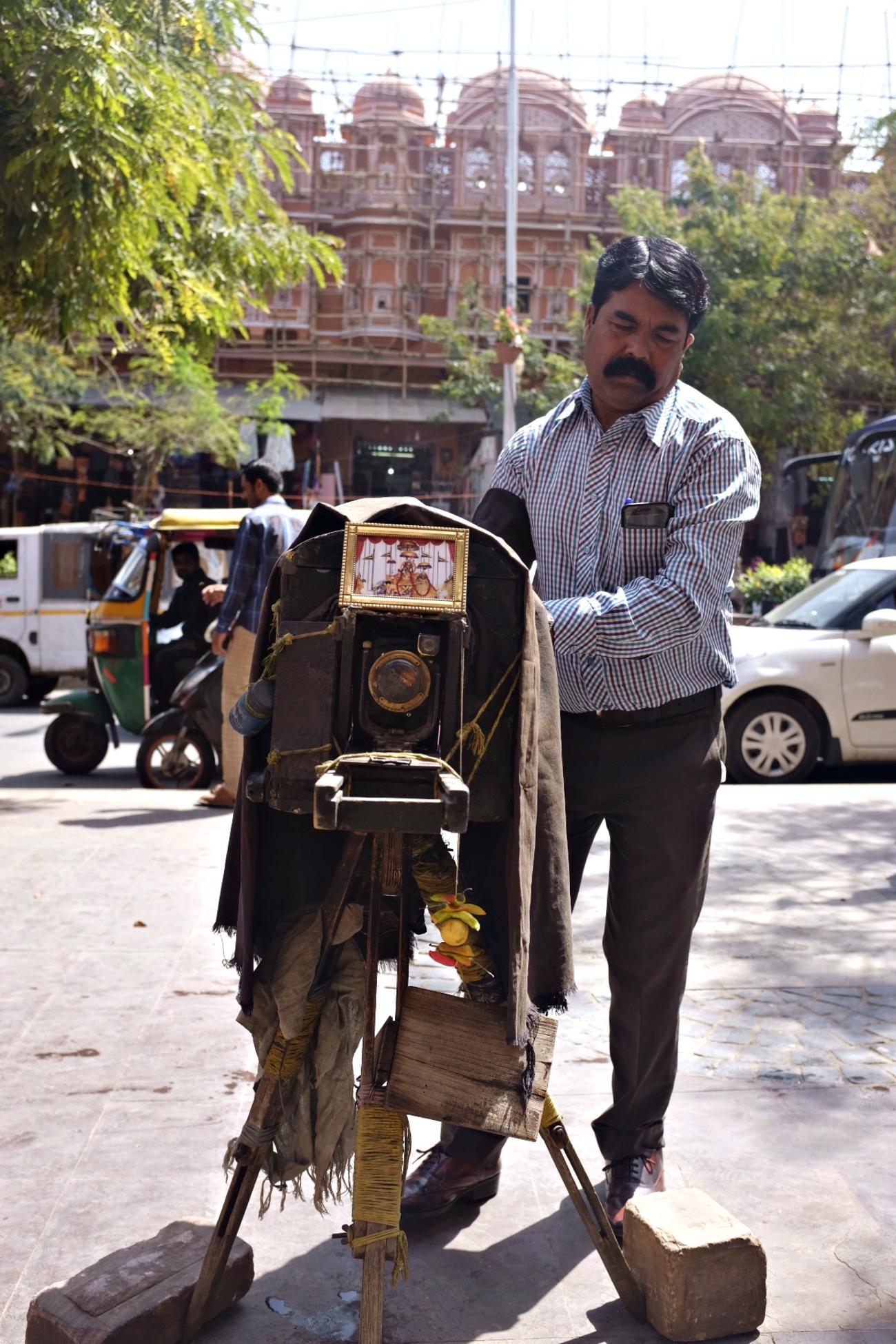Today I had the honour of having my portrait taken by legendary photographer Mr. Tikam Chand. Tikam is the proud owner of an 1860 Carl Zeiss camera, the last surviving camera of its kind in the world today.
The camera was originally given to his grandfather Pahari Lal by the Maharaja of Jaipur, as he was the photographer of the royal family, and since then it has been handed down through the generations.
Now Tikam spends his days with the camera on the streets of Jaipur taking people’s portraits, and using some incredible techniques, manages to develop a photo for you there and then on the street. I’d read about Tikam whilst planning my trip to India and knew that I couldn’t come to Jaipur without meeting him.


Walking through the busy streets of the Pink City, past fruit sellers and handicraft shops, I soon find Tikam standing not far from Hawa Mahal, the Palace of the Winds, where he bases himself every day. Next to him stands the legendary camera, mounted on a simple wooden tripod that is held in place by three large bricks.
This incredible antique has been cared for over the years by Tikam, his father and his grandfather, and uniquely has its darkroom, film box, developer and fixer all inside this compact apparatus.
“It is a dying art and one that is not easy to maintain. I can’t get the correct paper and chemicals I need in India anymore and so now I have to import them from Europe, mostly Germany, France or the UK”, Tikam tells me. “But it is important to keep this art going, people need to understand where it all started and how much skill goes into it.”

Recognising my interest in photography he excitedly starts to explain the mechanics to me, showing me the focus and aperture, and demonstrating the lack of shutter button which requires him to remove the cap on the front of the lens for 1-2 seconds to capture the right exposure.
After discussing the size of the portrait I’d like to get done, Tikam then proceeds to direct me like the artist he is, trying out different positions and poses until he is happy with the right one.
He’s then back behind the lens, diving in and out from behind the camera while he checks the focus and gets everything set up behind the scenes. Then suddenly I hear “OK, 1-2-3 ready”, and in a second he removes and replaces the lens cap on the front of the camera, and the photo’s taken!

Using his bare hands Tikam then rubs the chemicals onto the negative before dropping it into the water bucket by our feet. He then places the negative upside down on a piece of wood and takes another photo of it, causing the blacks and whites to invert, effectively turning a negative into a positive image.

Watching this lengthy process from start to finish is fascinating, and it’s hard to believe that Tikam has managed to keep this up since he first started in the 1970s.
“My son will take over next year”, he tells me, “although he is not very happy about it, as there is no money in this kind of photography.”
He then breathes a big sigh and smiles and simply says, “But there is beauty in it.”

